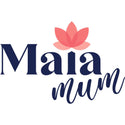As a new mum, there are countless new terms and procedures that may come your way during pregnancy and childbirth. One such term you might encounter is "episiotomy." While it may sound intimidating at first, understanding what an episiotomy is can help ease any concerns you may have.
An episiotomy is a surgical incision made in the perineum — the area between the vagina and the anus — during childbirth. This procedure is typically performed by a healthcare provider to widen the vaginal opening and facilitate the delivery of the baby, especially in cases where there is concern about tearing or when a quick delivery is necessary to avoid complications for the mother or baby.
The decision to perform an episiotomy is not taken lightly and is usually made by the healthcare provider based on various factors such as the position of the baby, the size of the baby, and the mother's health. While episiotomies were once routine during childbirth, they are now performed selectively, as research has shown that routine episiotomies may not offer significant benefits and can lead to complications such as increased pain and slower healing.
Recovery from an episiotomy can vary from person to person. However, there are steps you can take to promote healing and reduce discomfort:
1. **Keep the area clean:** Gently clean the episiotomy site with warm water and pat it dry with a clean towel. Avoid using harsh soaps or perfumed products, as they may irritate the area.
2. **Use pain relief:** Over-the-counter pain relievers like ibuprofen can help alleviate discomfort. Your healthcare provider may also prescribe topical ointments or pain medications if needed.
3. **Practice good hygiene:** Change sanitary pads frequently to keep the area clean and dry. Avoid using tampons or inserting anything into the vagina until your healthcare provider gives you the green light.
4. **Take it easy:** Avoid strenuous activities and give your body time to heal. Rest as much as possible and avoid lifting heavy objects.
5. **Pelvic floor exercises:** Gentle pelvic floor exercises, such as Kegels, can help strengthen the muscles in the pelvic area and promote healing.
It's important to remember that every birth experience is unique, and while episiotomies are common, they are not always necessary. If you have any concerns or questions about episiotomies or your postpartum recovery, don't hesitate to talk to your healthcare provider.
At Maia Mum, we understand the challenges that new mums face during the postpartum period. That's why we offer a range of products designed to support your recovery and promote your overall well-being. From our Soothe-It Spray to Padsicles, Maia Mum is here to help you feel your best as you embark on this new journey into motherhood. 🌸🌟
Click here to grab a bottle of Soothe-It Spray or a box of Instant Cool Padsicles




